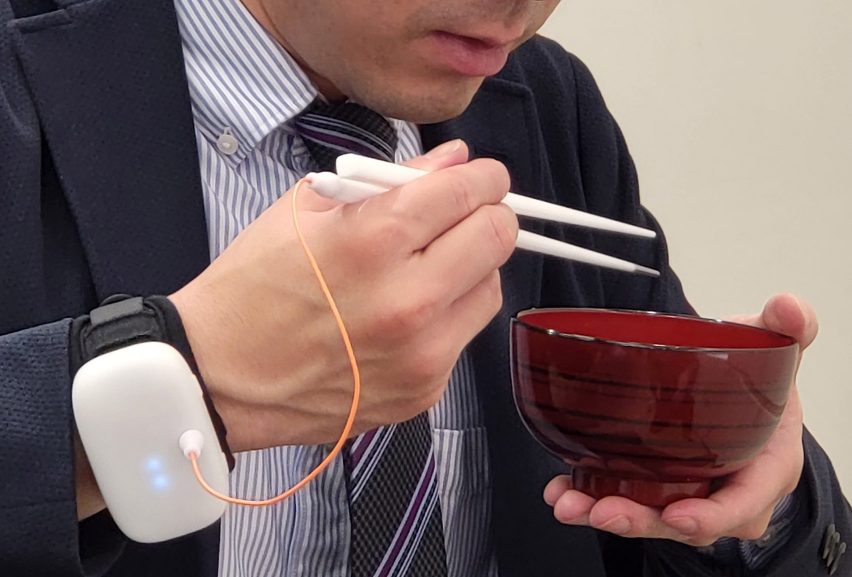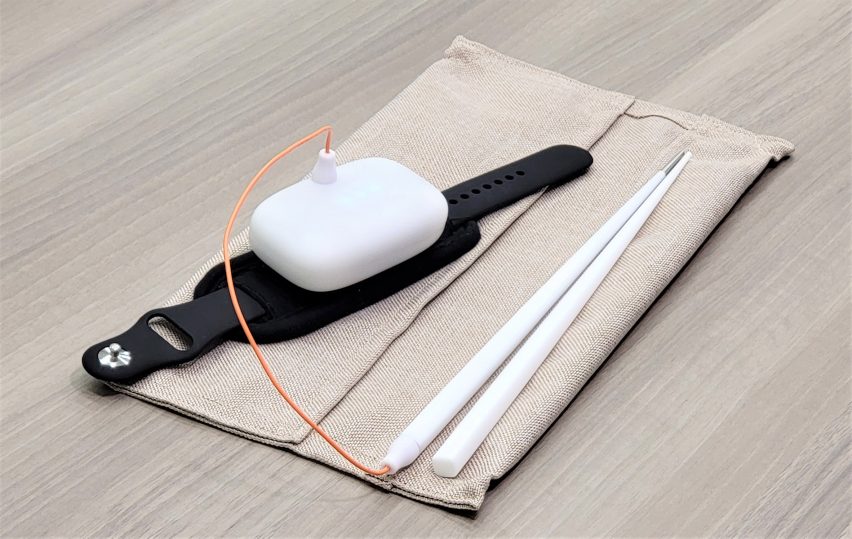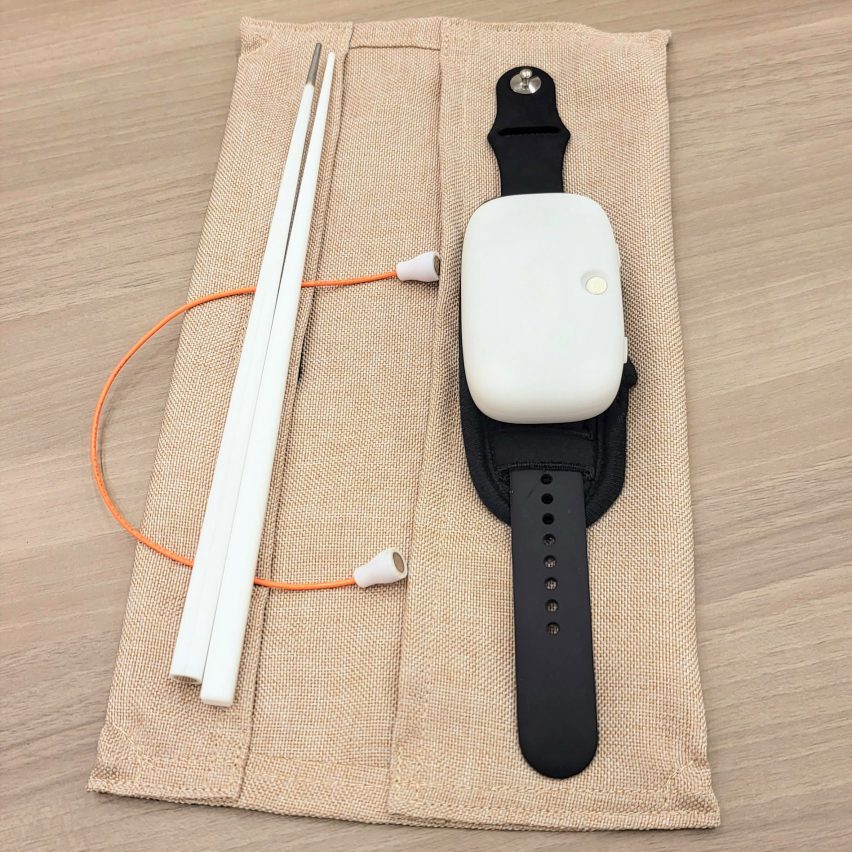Taste-Adjusting Chopsticks makes food taste saltier without adding salt
Japanese food and beverage company Kirin Holdings and researchers at Meiji University have developed a wearable device connected to a chopstick that uses an electric current to simulate food tasting salty.
Called Taste-Adjusting Chopsticks, the device is designed to enhance the taste of low-sodium foods without diners having to add extra salt or compromise on taste. According to the brand's research, it can make food taste 1.5 times saltier.
"We have developed an electrical stimulation waveform that controls perceived saltiness with a weak electric current and enhances the taste of low-sodium foods," Kirin Holdings told Dezeen.

The chopsticks, which Kirin Holdings describes as a "world's first", work by using electrical stimulation from a small computer worn on the user's wrist.
The current prototype model comes in the form of a black wristband made from a soft plastic similar to that on a smartwatch with a mini-computer embedded on top.
Connected to the unit by an orange wire, the chopstick conducts an electric current to the food, which activates ions in sodium chloride and sodium glutamat. This effectively changes the perception of taste by making flavours such as salt seem stronger.

To test the device, Kirin Holdings and Meji University researchers conducted a study with 36 people who were on a low sodium diet. The participants tasted two versions of miso soup – one with 30 per cent less salt and one with normal salt levels.
After each sample was tested, the participants gave a perceived level of saltiness. They then tried the soups using the Taste-Adjusting Chopsticks.
"When tasting low-sodium food samples, the perceived saltiness was enhanced by a factor of 1.5 when the developed electrical stimulation waveform was applied to the chopstick compared to without stimulation," explained the brand.
Kirin Holdings hopes that the technology may prove helpful for people on a low-salt diet or as an alternative to salt, which has been associated with numerous health problems.
The company pointed to statistics that show the daily salt intake of Japanese adults is 10.9 grams for men and 9.3 grams for women, which is much higher that the five grams per day reconmended by the World Health Organization.
Excessive salt intake can lead to the onset of ailments including hypertension and chronic kidney disease – yet products and experiences are rarely designed with these factors in mind.

Although the prototype is currently being developed for use with chopsticks, the brand hopes that it could be altered and made for use with other kitchen utensils such as spoons or forks.
Others developing products that alter perceptions of senses include Japanese researcher Homei Miyashita, who developed a device with dissolved electrolytes that replicate different food tastes on the user's tongue.
Students at the RCA created a device that licks you during a phone conversation, allowing people to physically experience conversations while apart during the coronavirus lockdown.
The photography is courtesy of Kirin Holdings.